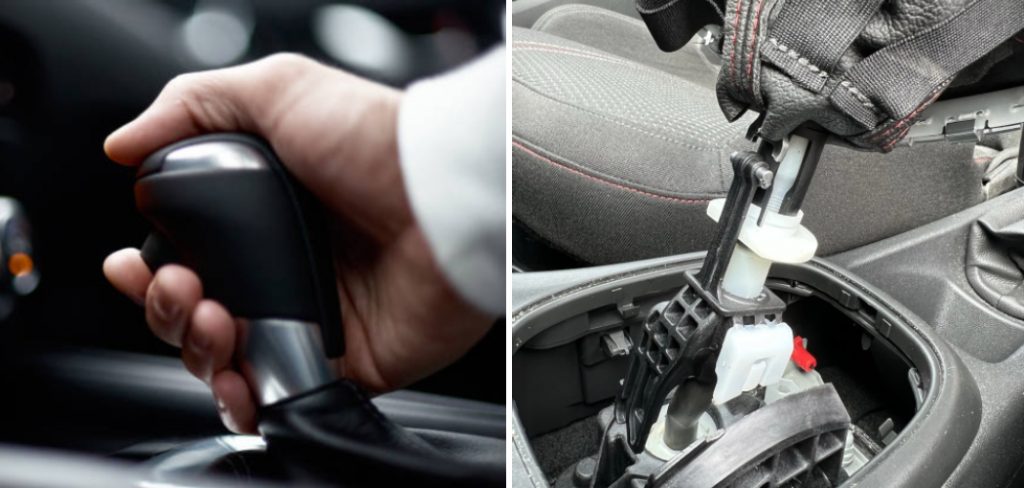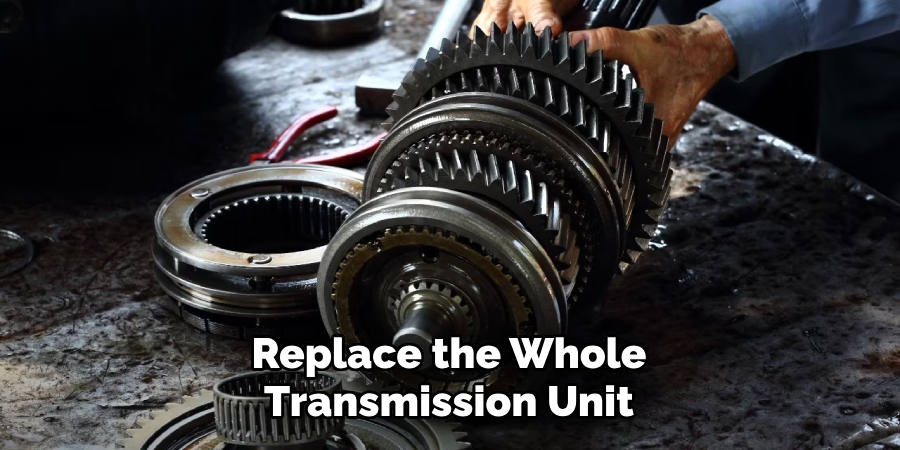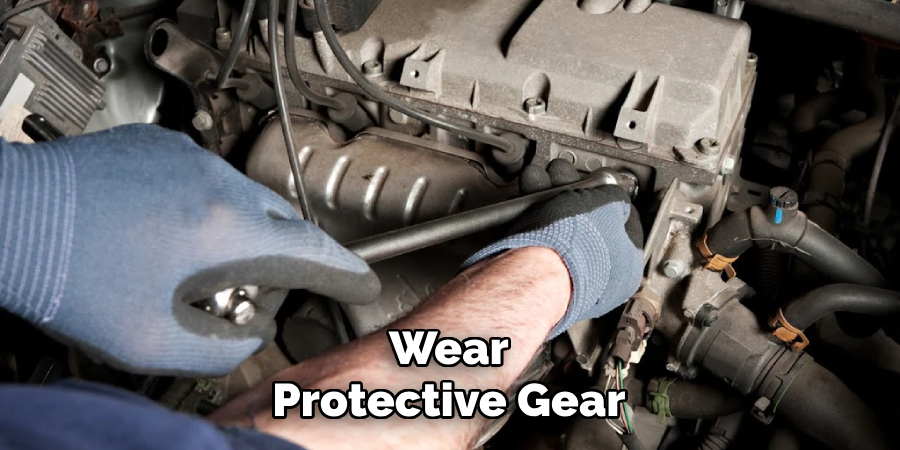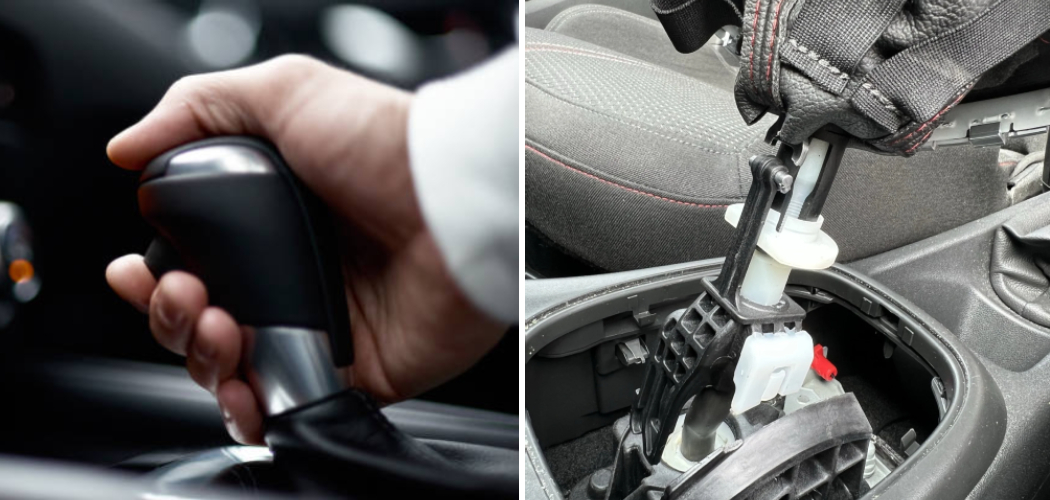Attention all jeep owners, are you tired of the reverse gear on your beloved vehicle giving you trouble? Have you been experiencing shuddering, grinding noises, or difficulty shifting into reverse? If so, then this blog post is for you. As a fellow Jeep owner and enthusiast, I understand the frustration and inconvenience of reverse gear issues. But fear not, I have done extensive research and consulted with experts to bring you the ultimate guide on fixing the reverse on a Jeep.

So buckle up (pun intended) as we dive into some helpful tips and tricks on how to fix the reverse on a Jeep. Whether off-roading adventures or daily commutes, let’s ensure your trusty jeep is equipped with flawless reverse gear. Keep reading to find out more!
What Will You Need?
Before we get started, we must have all the necessary tools and equipment on hand. This will save you time and hassle as you work through the steps. Here are some items that you may need:
- Jack stands
- Wheel chocks
- Socket wrench set
- Screwdrivers
- Pliers
- Transmission fluid
Of course, depending on the specific issue with your Jeep’s reverse gear, you may need additional tools or parts. It’s always a good idea to consult your vehicle’s manual or seek professional advice for a more accurate list of required materials.
10 Easy Steps on How to Fix the Reverse on a Jeep
1. Check the Transmission Fluid
The first step in fixing the reverse on a Jeep is to check the transmission fluid. Low or dirty transmission fluid can cause issues with shifting, including difficulty getting into reverse. Locate the transmission dipstick (usually labeled with a red or yellow handle) to check the fluid and pull it out. Wipe it clean with a rag and reinsert it, then pull it out to see where the fluid level falls on the markings. If it is low, add more fluid as needed.
2. Inspect the Gear Shifter
The issue may be with the gear shifter if the transmission fluid levels are acceptable. Over time, dirt and debris can build up around the shifter mechanism, making it difficult to shift into reverse. Use a cleaning agent like WD-40 to clean around the shifter and remove any built-up grime. You may also want to check for any loose or damaged parts that need replacing.

3. Check for Transmission Issues
If neither of these solutions works, an issue with your Jeep’s transmission may require professional attention. It could be anything from a damaged solenoid to worn gears or clutches. Take your Jeep to a certified mechanic specializing in communications for a thorough diagnosis and repair plan.
4. Look for Damage in the Transmission Linkage
The transmission linkage connects the gear shifter to the transmission and allows for changing gears. If your Jeep’s reverse gear is malfunctioning, there could be a problem with the transmission linkage. It could be bent, damaged, or misaligned. To check, you’ll need to look underneath your Jeep and locate the link.
If you notice any signs of damage or wear and tear, it may be necessary to replace the entire link. Remember, if you need more confidence in this task, always seek professional help.
5. Replace the Reverse Light Switch
The reverse light switch signals the reverse lights to turn on when your Jeep is put into reverse. If it’s faulty, it can cause issues with the reverse function. The switch is typically located on the side of the transmission.
To replace it, you’ll need to disconnect the wiring harness, unscrew the old switch, and screw in the new one. Be sure to check the owner’s manual for your model’s specific location and instructions. Once the new switch is installed, test your Jeep to see if the reverse function has improved.
6. Adjust the Transmission Band
The transmission band is a steel strap that wraps around parts of the transmission and aids in gear shifting. If it’s too loose or too tight, it can cause issues with shifting into reverse. To adjust the band, you’ll need to locate it (usually under the transmission pan), loosen the lock nut, and adjust the screw until it’s at the proper tension. Then, tighten the lock nut back up.
This intricate step should be done carefully, as over-tightening can lead to further issues. It’s always best to consult a professional if you need more clarification.
7. Inspect the Transmission Valve Body
The transmission valve body is essentially the brain of your transmission. It directs hydraulic fluid to the appropriate channels to engage the correct gear. If the valve body is malfunctioning, it may be the cause of your Jeep’s reverse issues. Inspecting the transmission valve body requires advanced knowledge of transmissions and specialized tools.

This task is best for professionals if you need more confidence in your abilities. If your valve body is faulty, it will likely need to be replaced. After replacement, test the reverse gear of your jeep again.
8. Replace the Reverse Gear
If all of the above steps have yet to resolve the issue, the reverse gear may need replacing. This complex task should only be undertaken by those with significant mechanical knowledge or professionals. You’ll need to remove the transmission from the Jeep, disassemble it, and replace the faulty gear.
Remember to take great care when dealing with the transmission, as missteps can lead to further damage and potential safety risks. Once the new equipment is in place, reassemble the message, reinstall it into your Jeep, and test the reverse function.
9. Rebuild or Replace the Transmission
Consider a complete transmission rebuild or replacement if you’ve replaced the reverse gear and your Jeep’s reverse is still not working. This costly and complex procedure involves taking apart the entire transmission, inspecting for worn or damaged parts, and replacing them.
Alternatively, you can replace the whole transmission unit, mainly if it’s an older model and features are hard to find. Both these tasks are best left to a certified mechanic. Once the rebuild or replacement is complete, you should find the reverse gear on your Jeep functioning optimally.

10. Regular Maintenance and Check-ups
The final step in keeping your Jeep’s reverse and all its gears in optimal condition is regular maintenance and periodic check-ups. Routine maintenance includes regularly checking and changing the transmission fluid, inspecting for external damage, and listening to unusual sounds when shifting gears.
Preventive care can save you from hefty repair bills by catching issues early before they escalate. Consider your vehicle’s manual for specific maintenance schedules and practices or contact a professional mechanic. After all, maintaining your Jeep isn’t just about ensuring its smooth operation and your safety on the road.
Following these steps, you can troubleshoot and fix the reverse gear on your Jeep if it’s not working correctly.
5 Additional Tips and Tricks
- Stay Organized: Keep all your tools and parts organized when working on your Jeep. Not only will this make the process smoother, but it will also prevent any details from being lost or misplaced.
- Use Quality Parts: When replacing parts, ensure you use high-quality, Jeep-approved parts. Using subpar parts can lead to further issues down the line.
- Safety First: Always prioritize safety when working on your Jeep. Use proper lifting equipment when needed, wear protective gear, and always ensure your Jeep is secure before working underneath it.
- Keep Learning: Stay informed about the latest Jeep models and their mechanisms. The more you understand about your vehicle, the better equipped you’ll be to address any issues that may arise.
- Know When to Seek Professional Help: If you need clarification on a particular process or if a problem persists even after your efforts, feel free to bring your Jeep to a professional mechanic. While fixing issues on your own can be rewarding, there’s no substitute for professional expertise.
By following these additional tips and tricks, you’ll be better prepared to maintain your Jeep and address any issues, including problems with the reverse gear.
5 Things You Should Avoid
- Ignoring Warning Signs: Don’t ignore these warning signs if your Jeep starts to behave differently or shows signs of a problem, such as unusual sounds or difficulty shifting gears. Delaying action could cause more damage to your vehicle.
- Skipping Regular Maintenance: Even if your Jeep appears to be running smoothly, take regular maintenance check-ups. These can prevent minor issues from becoming major problems.
- Using Wrong or Inferior Quality Parts: Avoid using non-Jeep-approved parts or low-quality replacements. These can lead to further issues and potentially void your warranty.
- DIY Without Proper Knowledge: Only attempt to fix complex issues independently with sufficient knowledge and experience. This can cause more harm than good, and you may incur more costs in the long run.
- Ignoring Safety Measures: Never compromise on safety. Always use the right tools, wear protective gear, and follow safe working practices when repairing or maintaining your Jeep.

By avoiding these mistakes, you can ensure that your Jeep stays in top condition and its reverse gear works correctly.
Conclusion
In conclusion, fixing the reverse on your Jeep may seem daunting, but it can be easily accomplished with the proper knowledge and tools. By following the steps outlined in this blog post, you can confidently navigate through the process and have your Jeep’s reverse gear working smoothly once again.
Remember to check all possible causes, from simple issues like low transmission fluid to complex ones like a faulty transmission solenoid. Feel free to seek help from a trusted mechanic if needed. Your Jeep is worth the effort and time to get it running flawlessly again.
Thank you for taking the time to read this comprehensive guide on how to fix the reverse on a Jeep. We hope it has been informative and helpful in tackling this common issue among Jeep owners. Always prioritize safety when handling vehicle repairs, and never hesitate to ask for assistance. Happy driving!

